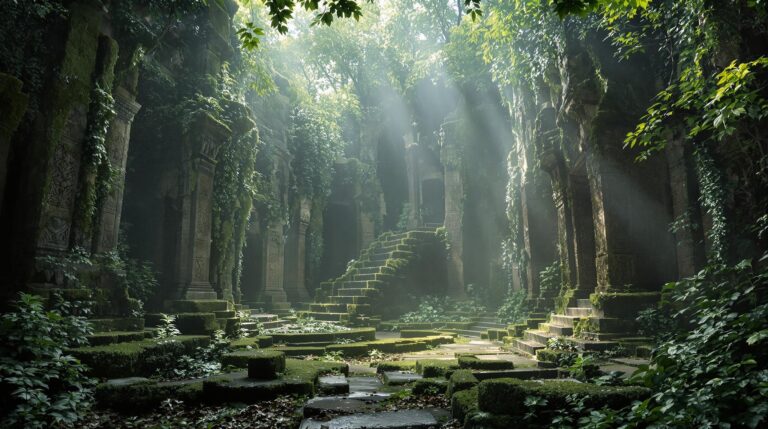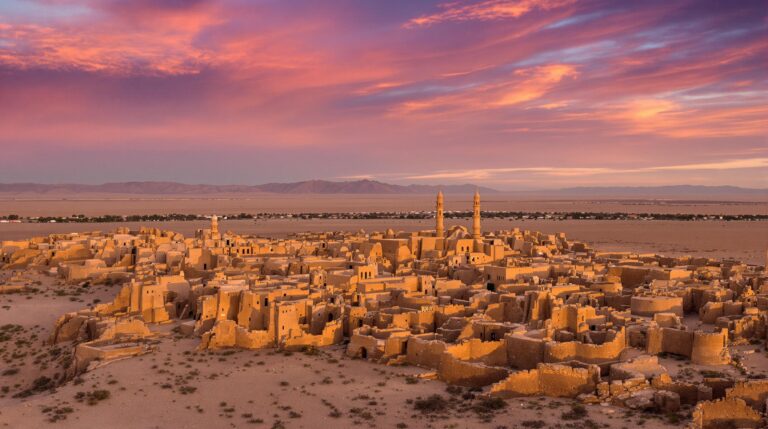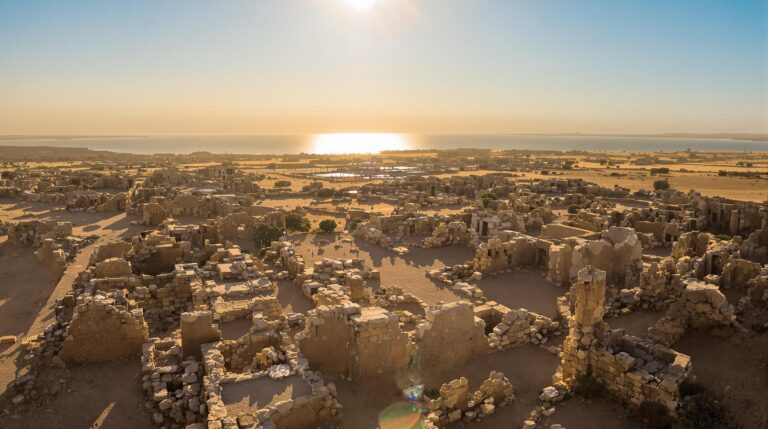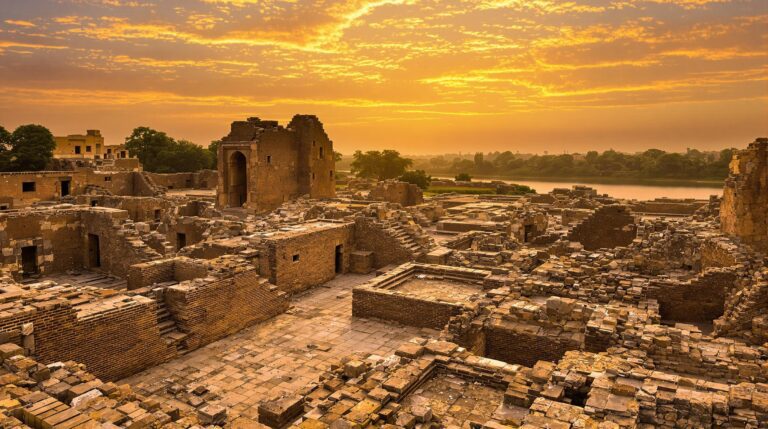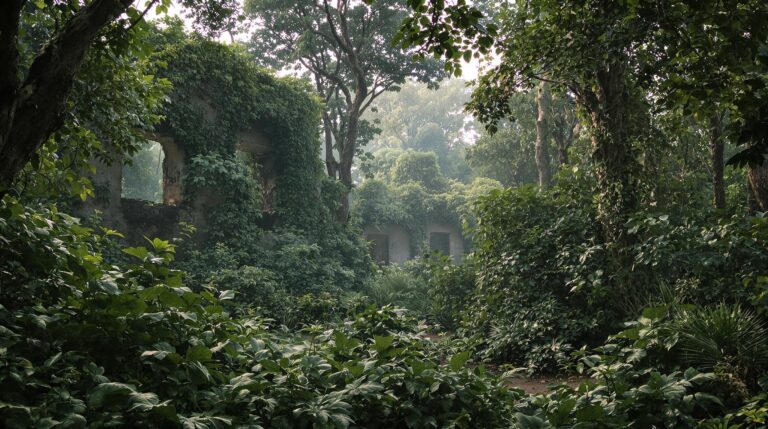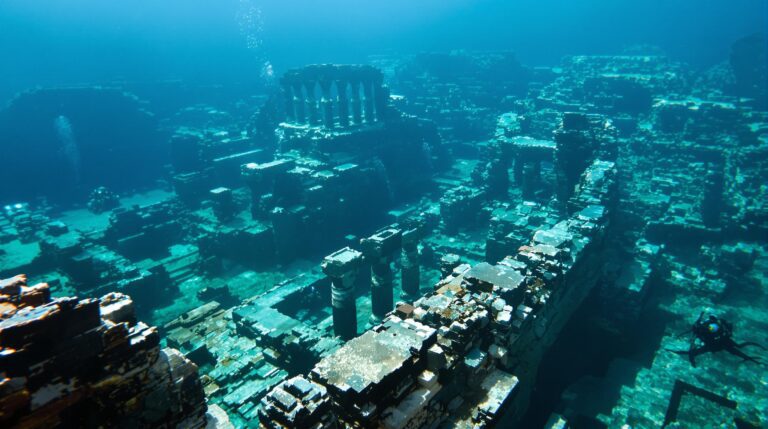22 Famous Lost Cities Worldwide
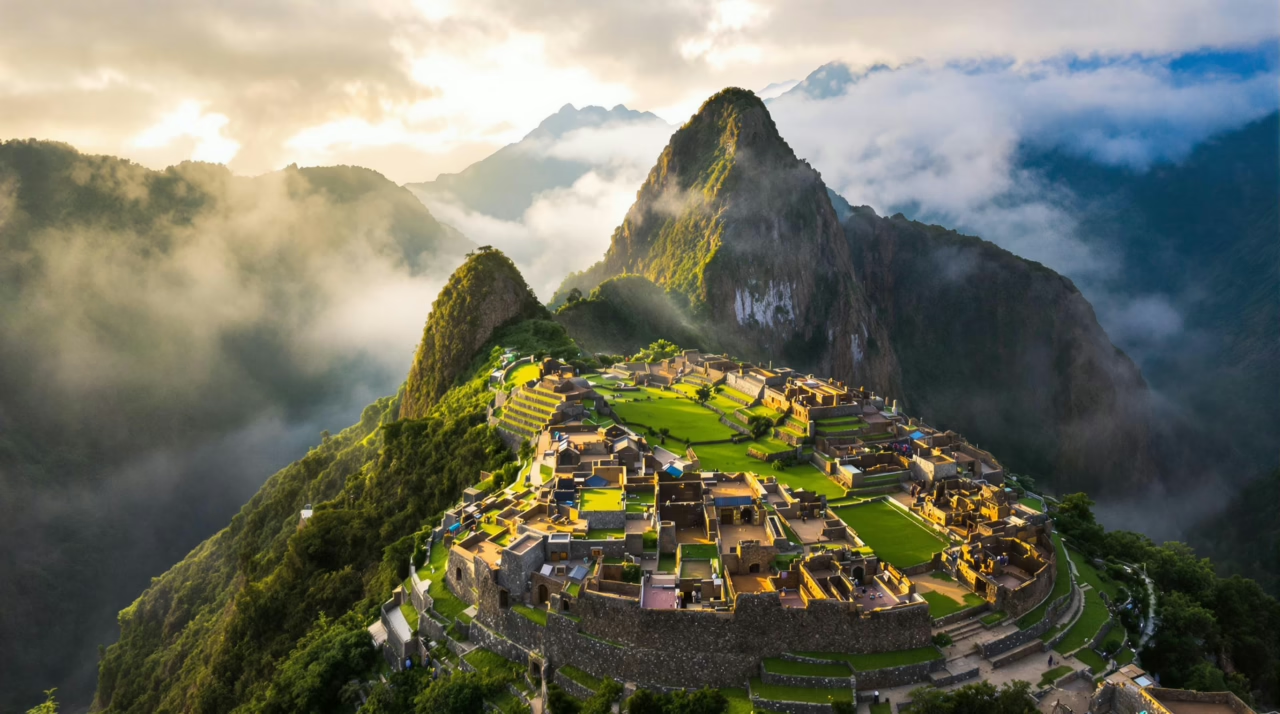
Famous lost cities captivate our collective imagination, representing civilization’s impermanence.
Atlantis remains mythology’s quintessential vanished metropolis, while Machu Picchu reveals Incan ingenuity, rediscovered only in 1911. Troy shifted from legend to archaeological fact through Schliemann’s persistence.
Other enigmatic sites—Angkor Wat, Mohenjo-Daro, Great Zimbabwe—testify to forgotten achievements across continents.
Some settlements disappeared beneath waves or jungle canopies; others were abandoned after catastrophic events.
These silent ruins pose questions about humanity’s forgotten chapters.
TL;DR
Hide- Machu Picchu, an Incan citadel rediscovered in 1911, offers insights into ancient engineering and astronomical knowledge.
- Troy's existence was confirmed through excavations at Hisarlik, Turkey, validating Homer's epic accounts in "The Iliad."
- Angkor Wat features remarkable hydraulic engineering and intricate bas-reliefs reflecting the Khmer Empire's sophistication.
- Atlantis remains history's most famous theoretical lost city, described by Plato and speculated to be in various locations worldwide.
- Pompeii and Timgad were preserved by volcanic ash and desert sands respectively, providing remarkable glimpses into ancient daily life.
What Happened to These Lost Cities? The 22 Most Famous Lost Cities in the World

Throughout history, cities have emerged and disappeared, leaving behind mysterious ruins that intrigue both archaeologists and historians.
These renowned lost cities symbolize the fleeting nature of human accomplishments, serving as testaments to ambition, now reclaimed by nature and the passage of time.
From the rose-colored structures of Petra to the cloud-hidden terraces of Machu Picchu, these ancient sites share tales of downfall, neglect, and environmental disaster.
These architectural ghosts capture our imagination, testament to civilizations that flourished briefly before nature reclaimed its domain.
Some cities lost to history vanished beneath volcanic ash or encroaching jungle, while others succumbed to war, disease, or economic obsolescence.
Perhaps most intriguing are the lost cities never found—those mentioned in ancient texts yet undiscovered, like Atlantis or the Seven Cities of Gold.
These elusive settlements fuel expeditions and speculation, reminding us that humanity’s historical landscape remains incomplete, a puzzle with missing pieces waiting to be recovered.
Atlantis and the Richat Structure

Where exactly lies the legendary city of Atlantis—that enigmatic metropolis first described by Plato in his dialogues “Timaeus” and “Critias”?
For centuries, seekers of this mythical lost city have scoured the globe, with theories positioning it everywhere from the Mediterranean to Antarctica.
Recently, the Richat Structure in Mauritania has captured imaginations as a potential Atlantis candidate. This massive geological formation, visible from space, bears an uncanny resemblance to Plato’s concentric rings description of the lost city location.
At 25 miles across, this eye-like depression in the Sahara Desert presents a compelling visual parallel to underwater lost cities theorists have long sought beneath waves.
Though mainstream archaeology dismisses the connection as coincidental, the structure’s perfect circularity continues to intrigue those who question whether this remarkable formation might represent the remnants of humanity’s most enduring lost civilization.
Atlantis and the Richat Structure
Amidst legends and geological marvels, the connection between Atlantis and the Richat Structure ... Read More
Machu Picchu
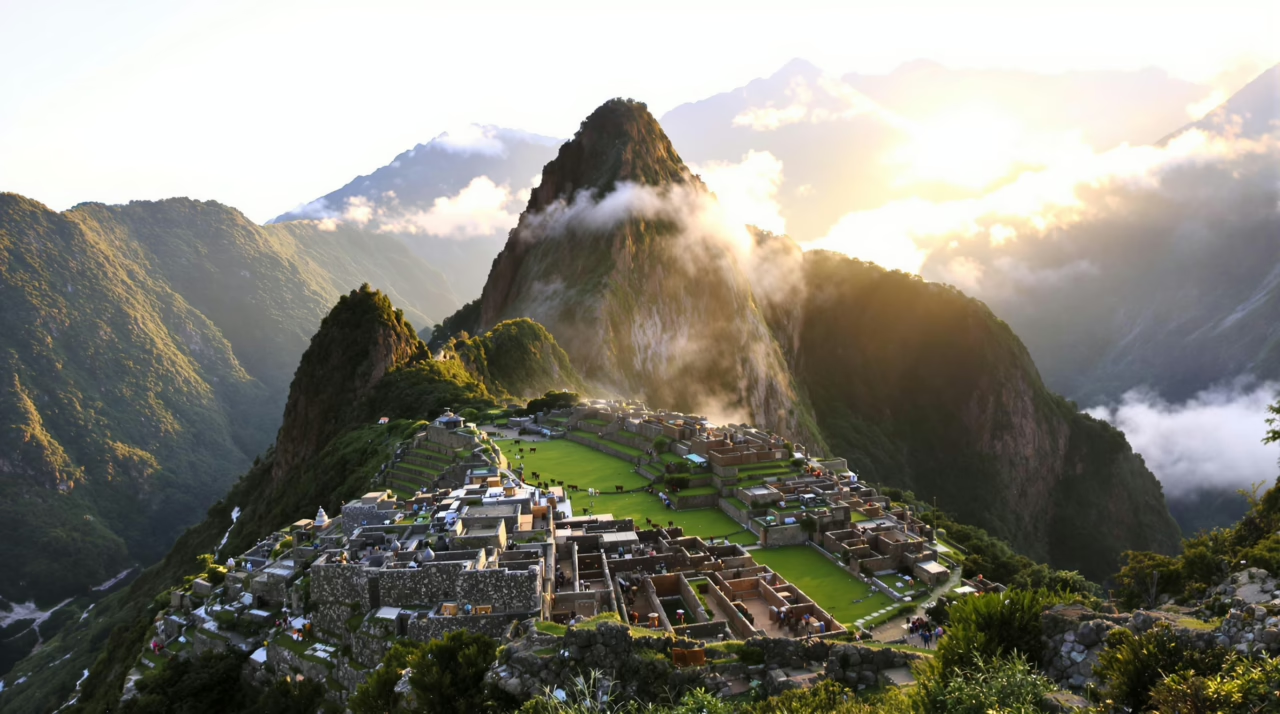
High atop the misty Peruvian Andes sits Machu Picchu, a 15th-century Incan citadel that remained hidden from Western eyes until Hiram Bingham’s 1911 expedition brought it to global attention.
Among famous lost cities in the world, the Machu Picchu mystery endures despite its rediscovery, as scholars still debate its precise function—whether ceremonial center, royal retreat, or astronomical observatory.
Unlike other ancient lost cities consumed by jungle or desert, Machu Picchu’s remarkable preservation offers unparalleled insight into Incan engineering and cosmology.
Its polished dry-stone walls, terraced fields, and precisely positioned temples stand as proof of a civilization that thrived without written language or the wheel.
How many other forgotten cities lie waiting beneath forest canopies or mountain shadows? The allure of such lost places continues to inspire both scientific inquiry and the human yearning for connection to our collective past.
Machu Picchu: The Lost Incan City
On the heights of the Andes, Machu Picchu reveals its enigmatic beauty and secrets; what mysteries ... Read More
Troy
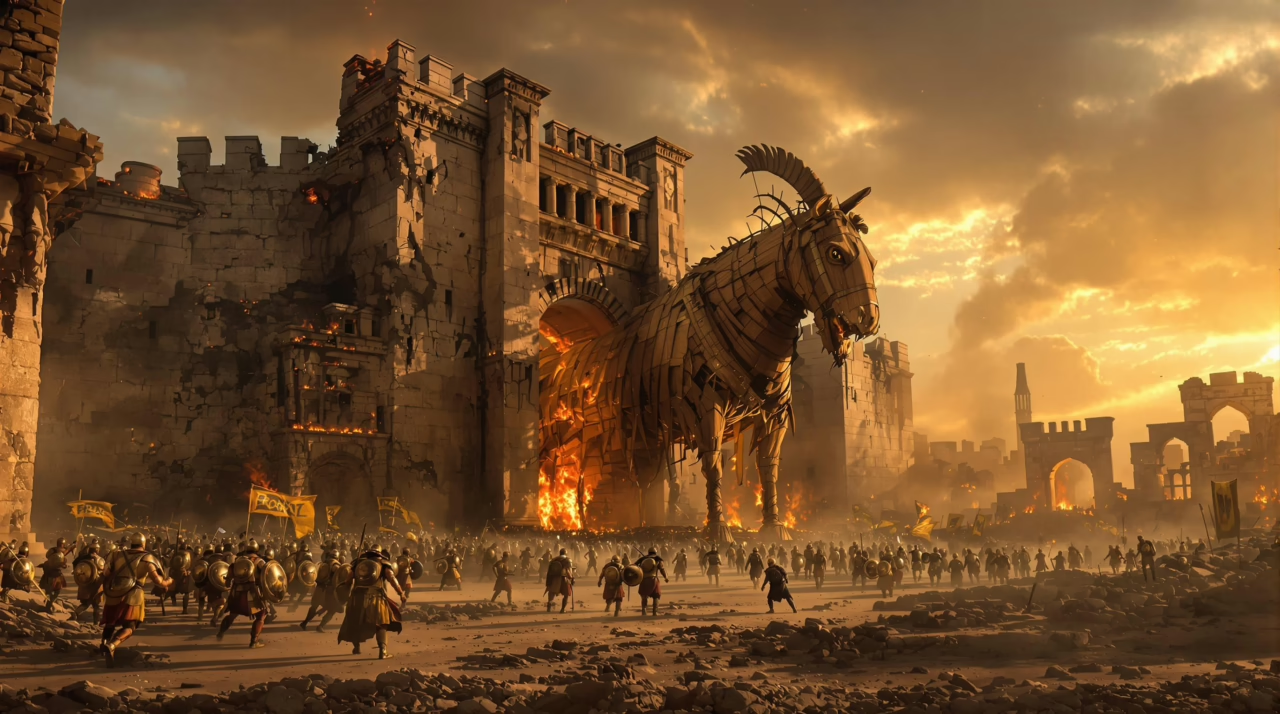
Unlike Machu Picchu’s relatively recent rediscovery, Troy represents perhaps archaeology’s most celebrated vindication of ancient literature, a legendary city once dismissed as mere mythology until Heinrich Schliemann’s controversial excavations in the 1870s uncovered its tangible remains at Hisarlik in modern Turkey.
Troy joins the ranks of ancient cities that no longer exist in their original glory, yet continues to captivate our imagination. Unlike many unknown cities or lost cities underwater, Troy’s multiple layers reveal nine distinct settlements spanning over 3,600 years.
- Homer’s epic “The Iliad” immortalized Troy as the setting for the Trojan War
- Archaeological evidence suggests Troy VIIa (1250-1180 BCE) was likely destroyed by warfare
- The site features impressive fortifications, including a stone ramp that once led to massive gates
Troy: Separating Myth From Reality
Peeling back the layers of Troy's legend reveals fascinating truths and lingering mysteries that ... Read More
El Dorado

While Troy emerged from myth into historical reality, El Dorado remains suspended in the liminal space between legend and truth, a shimmering mirage that beckoned European conquistadors deeper into the uncharted territories of South America during the 16th century.
Unlike lost cities in the Amazon with tangible archaeological remains, this fabled domain of gold existed primarily in the European imagination, migrating from an anointed chieftain to an entire city, then ultimately to a kingdomwide manifestation of untold wealth.
Erroneously sought as a lost city in Mexico by some, El Dorado exemplifies how our fascination with places that no longer exist—or perhaps never did—reveals more about human nature than about ancient cities in the Amazon themselves.
The quest consumed countless lives, yet the allure of forbidden riches continues to captivate our collective consciousness.
El Dorado: Mythical City of Gold
On a quest for riches, explorers chase the elusive El Dorado, but what dark truths lie behind this ... Read More
Angkor Wat
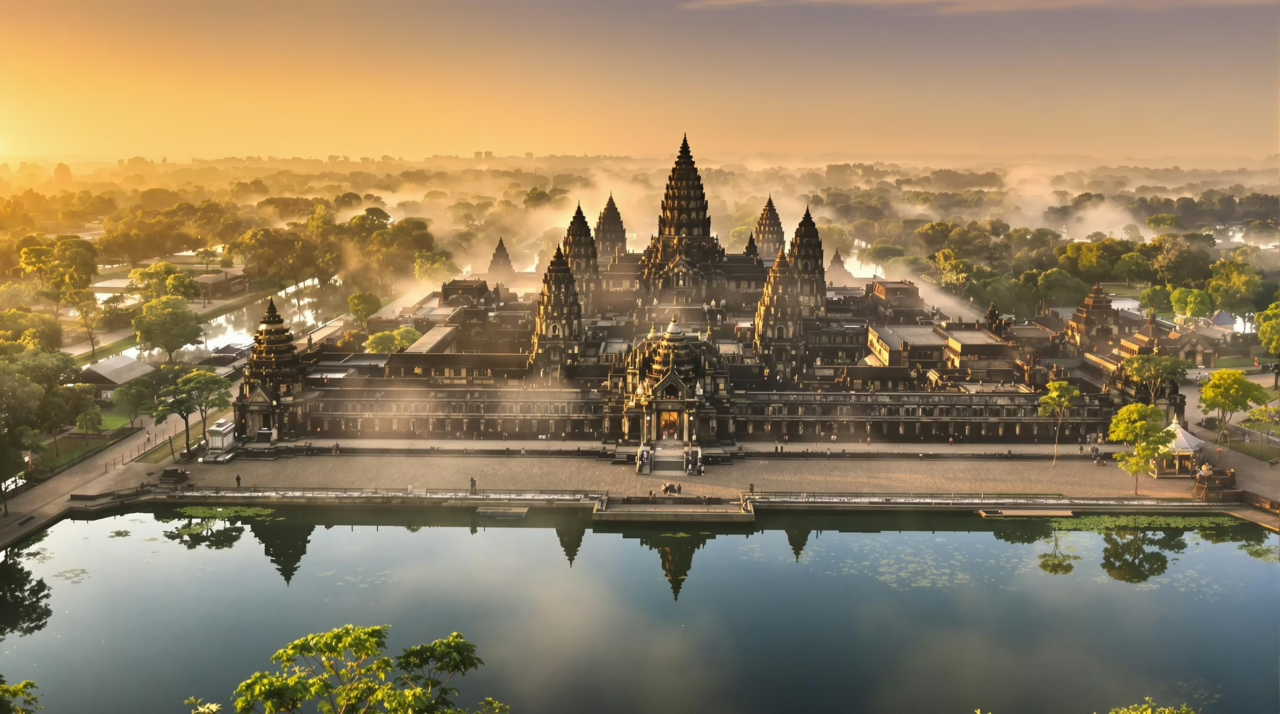
Veiled by jungle for centuries, Angkor Wat emerged from Cambodia’s dense forests as one of humanity’s most extraordinary architectural achievements, a stone monument to the grandeur of the Khmer Empire that flourished between the 9th and 15th centuries.
Unlike underwater cities claimed by rising seas, Angkor Wat was never truly lost but forgotten by the outside world until French naturalist Henri Mouhot reintroduced it to Western consciousness in 1860.
The vast temple complex exemplifies why ancient ruins captivate the modern imagination:
- Its intricate bas-reliefs narrate Hindu epics across nearly half a mile of stone galleries
- The central quincunx of towers symbolizes Mount Meru, the cosmic center in Hindu cosmology
- Water features and moats demonstrate sophisticated hydraulic engineering
Angkor’s eventual abandonment remains debated among scholars, though evidence suggests climate change and failing water systems contributed to its gradual decline.
Angkor Wat: Secrets of the Lost Empire
Hidden beneath Angkor Wat's majestic facade lie secrets that could unravel the mysteries of a lost ... Read More
Mohenjo-Daro
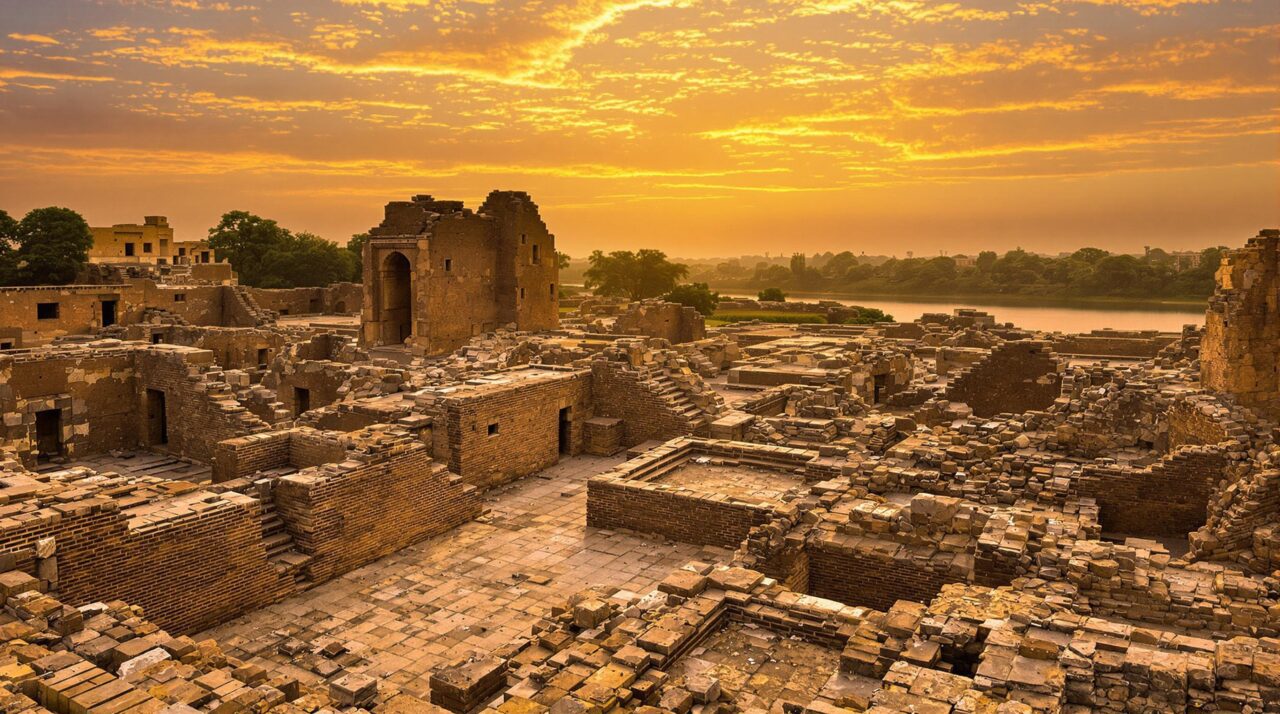
Four thousand years before archaeologists unearthed its remains in the 1920s, Mohenjo-Daro stood as a marvel of urban planning along the Indus River in what is now Pakistan, a sophisticated metropolis that rivaled its contemporaries in Mesopotamia and Egypt.
Unlike many lost cities that became underwater city ruins, Mohenjo-Daro succumbed not to rising waters but to the slow dissolution of its own civilization.
The city’s advanced drainage systems, sophisticated architecture, and grid-like layout reveal a society of remarkable sophistication.
Scholars debate what cataclysm befell this jewel of ancient cities—whether invasion, climate change, or disease—before it sank into obscurity.
What secrets might still lie beneath the dusty remnants of this once-thriving urban center?
Mohenjo-Daro challenges us to reconsider the technological capabilities of our earliest ancestors.
Mohenjo-Daro: Traces of a Lost Indus Civilization
Mohenjo-Daro, an ancient marvel of the Indus Valley civilization, intrigues historians with its ... Read More
Xanadu
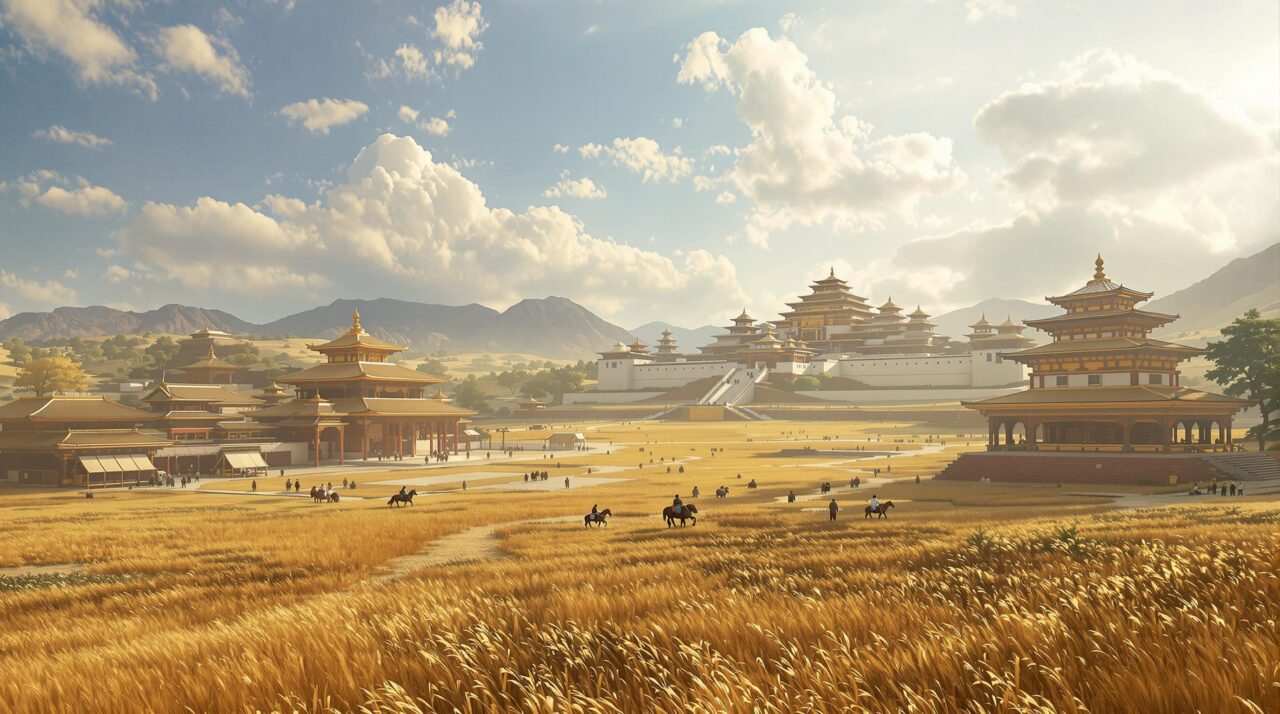
Kublai Khan’s legendary summer capital, Xanadu, has captured humanity’s imagination for centuries, immortalized in Samuel Taylor Coleridge’s romantic vision yet grounded in historical reality as the magnificent city of Shangdu in Inner Mongolia.
Unlike cities found underwater or sunken cities before they sank, Xanadu’s remains still emerge from grasslands, a terrestrial counterpart to lost cities in the ocean.
While underwater cities rest in aquatic tombs, Xanadu emerges defiantly from the grasslands, a terrestrial monument to faded glory.
Archaeological excavations reveal three remarkable aspects:
- Sophisticated urban planning with distinct imperial and civilian quarters
- Advanced hydraulic systems rivaling underwater cities in the world
- Cultural synthesis of Mongol, Chinese, and Persian influences
Though not submerged like amazon lost cities or underwater metropolises, Xanadu’s abandonment following the Ming Dynasty’s rise rendered it equally mysterious.
Its stone foundations whisper of extravagant summer ceremonies and cosmopolitan exchanges, preserving fragments of a crossroads civilization where East met West.
Xanadu: Legendary Capital of Kublai Khan
Wander through the captivating remnants of Xanadu, where whispers of its glorious past conceal ... Read More
The Lost Colony of Roanoke
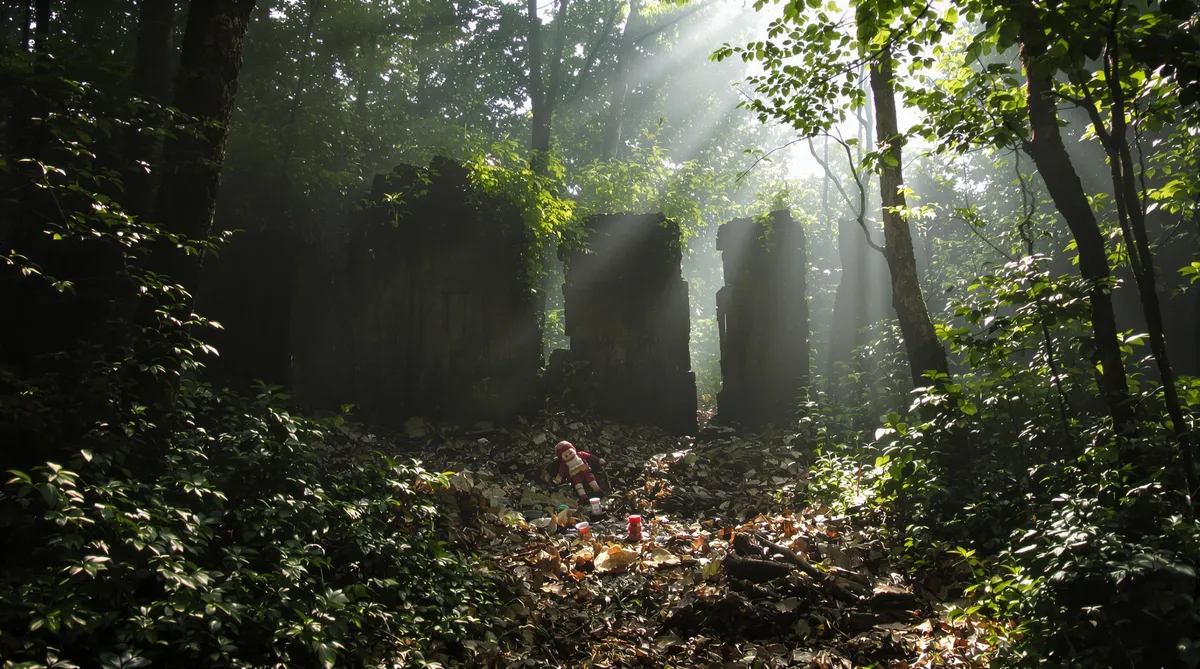
While Xanadu represents Asia’s enigmatic architectural grandeur, across the Atlantic lies perhaps America’s most enduring historical mystery—the Lost Colony of Roanoke.
Established in 1587 on North Carolina’s outer banks, this first English settlement in the New World vanished without apparent violence, leaving behind only the cryptic inscription “CROATOAN” carved into a post.
When Governor John White returned from England three years after the colony’s founding, he discovered 117 settlers—including his granddaughter, Virginia Dare, the first English child born in America—had disappeared completely.
Archaeological excavations continue to yield tantalizing clues: scattered artifacts, possible integration with indigenous populations, and theories of relocation.
The colonists’ fate remains unresolved, a reflection of the fragility of early colonial ambitions and the unforgiving nature of a continent that refused easy conquest, challenging modern assumptions about documented history’s completeness.
The Lost Colony of Roanoke
Shrouded in mystery, the Lost Colony of Roanoke leaves us guessing with its cryptic clue, ... Read More
Great Zimbabwe
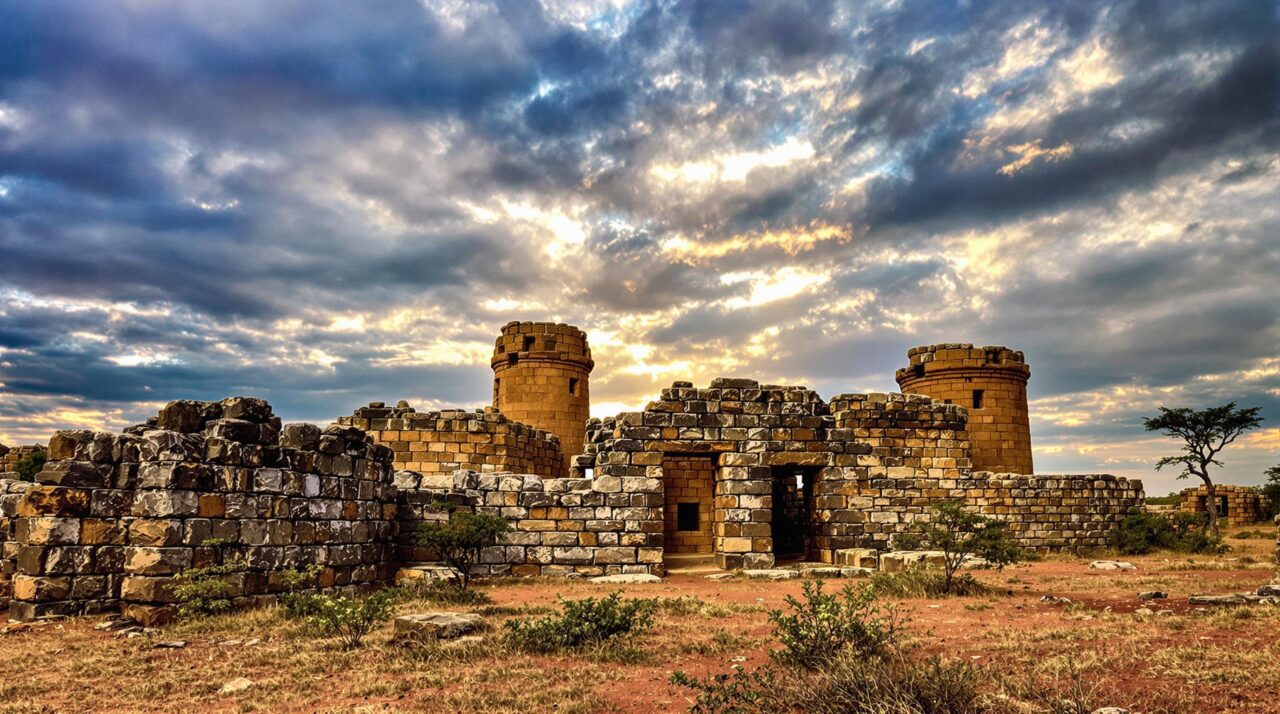
Few ancient cities have confounded European scholars more thoroughly than Great Zimbabwe, a sprawling stone metropolis nestled among the rolling hills of present-day Zimbabwe.
Constructed between the 11th and 15th centuries by ancestors of the Shona people, its massive granite walls and complex architecture stand as testimony to sophisticated African civilization that predated European contact.
Key features of Great Zimbabwe include:
- The Great Enclosure, with walls reaching 36 feet high without mortar
- Intricate stone towers and conical structures serving ceremonial purposes
- Artifacts including soapstone birds and imported Chinese ceramics
Colonial authorities, unwilling to acknowledge indigenous achievement, attributed these ruins to Phoenicians or other non-African builders. This deliberate misattribution reflected imperial ideology rather than archaeological evidence.
Today, Great Zimbabwe reclaims its rightful place as a monument to African ingenuity and statecraft.
Great Zimbabwe: The Stone City’s Secrets in Africa
Uncover the enigmatic legacy of Great Zimbabwe, where ancient echoes of trade and sophistication ... Read More
Dwarka
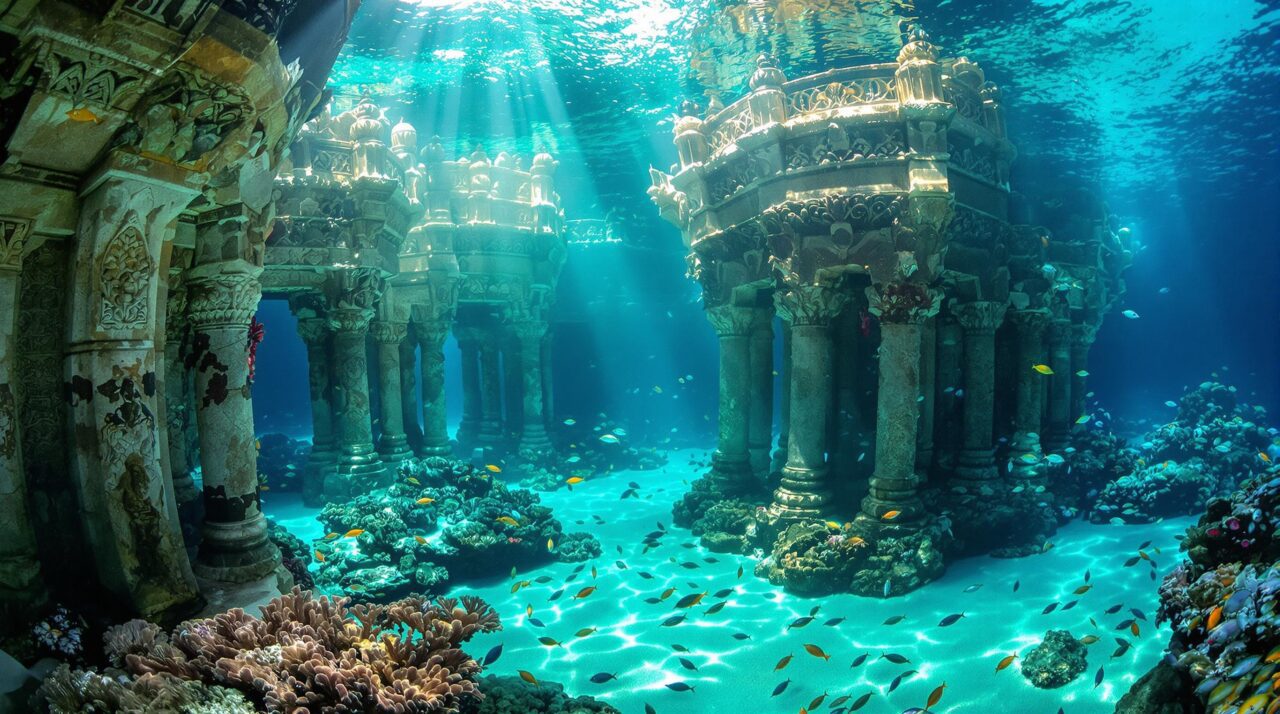
Legends of an ancient submerged metropolis have captivated archaeologists and religious scholars alike in their quest to uncover the truth about Dwarka, a legendary city mentioned in Hindu texts that supposedly lies beneath the waters off India’s western coast.
According to the Mahabharata, Lord Krishna established this magnificent city, which was eventually submerged by rising seas around 1500 BCE.
Marine archaeological explorations near modern Dwarka have revealed stone structures, anchors, and artifacts dating to approximately 1500 BCE.
These subaqueous ruins, discovered in the 1980s, extend across multiple distinct underwater sites in the Gulf of Khambhat.
While skeptics question whether these structures represent the mythological Dwarka or merely another ancient settlement, their existence demonstrates how thin the boundary between mythology and history can sometimes be.
The ongoing investigation continues to illuminate India’s maritime past.
Dwarka: Krishna’s Legendary Sunken City
Beneath the waves of the Arabian Sea lies Dwarka, a legendary city of Krishna—what secrets ... Read More
Ciudad Perdida
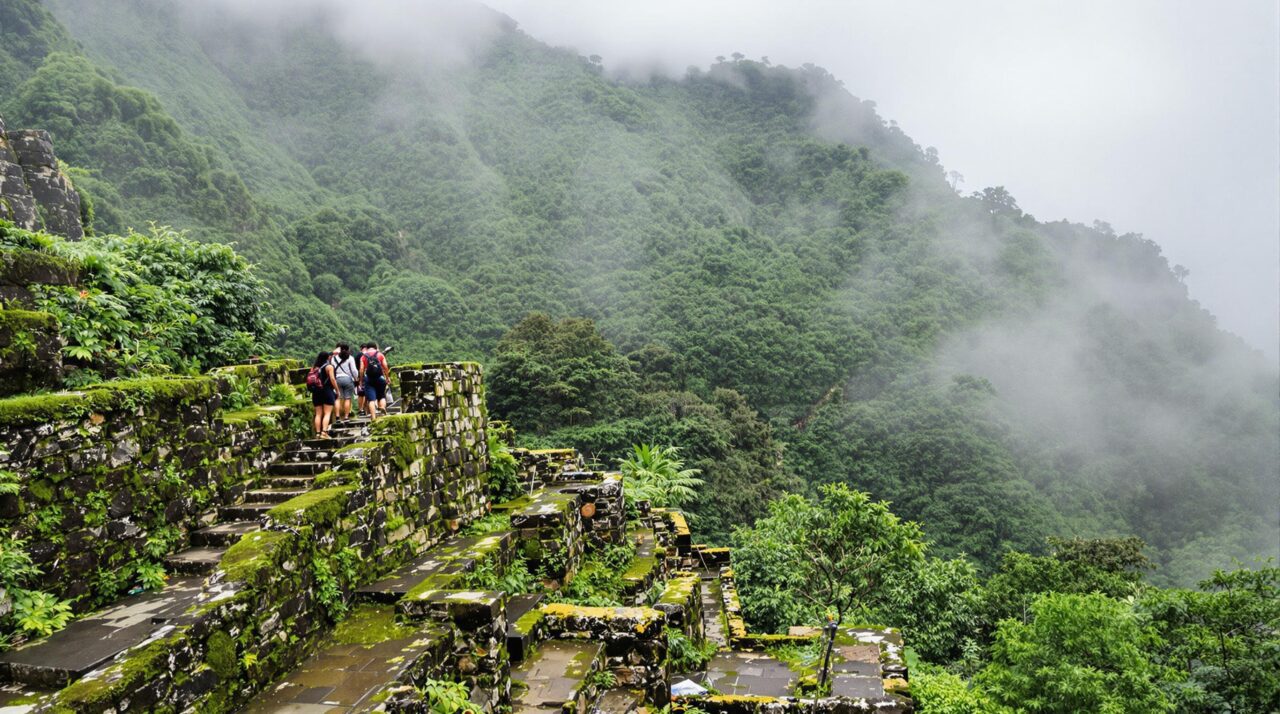
Ciudad Perdida, Colombia’s “Lost City,” remained hidden beneath dense jungle canopy until its rediscovery in 1972 when local treasure hunters stumbled upon a series of stone steps ascending a mountainside.
Predating Machu Picchu by approximately 650 years, this architectural marvel was constructed around 800 CE by the Tairona civilization, who thrived in the region until Spanish conquest in the 16th century.
The site features:
- A complex network of stone terraces, plazas, and circular foundations spanning nearly 80 acres
- Over 169 stone steps leading to the central plaza, demanding physical endurance from visitors
- Sophisticated drainage systems that have withstood centuries of tropical rainfall
Contemporary visitors who brave the arduous four-day trek through Colombia’s Sierra Nevada mountains experience not merely archaeological wonder but profound communion with a civilization that flourished in harmony with one of Earth’s most challenging environments.
Ciudad Perdida: Colombia’s Lost Jungle City
The Lost City in Colombia unveils secrets of the Tayrona civilization, but will its newfound fame ... Read More
Iram of the Pillars
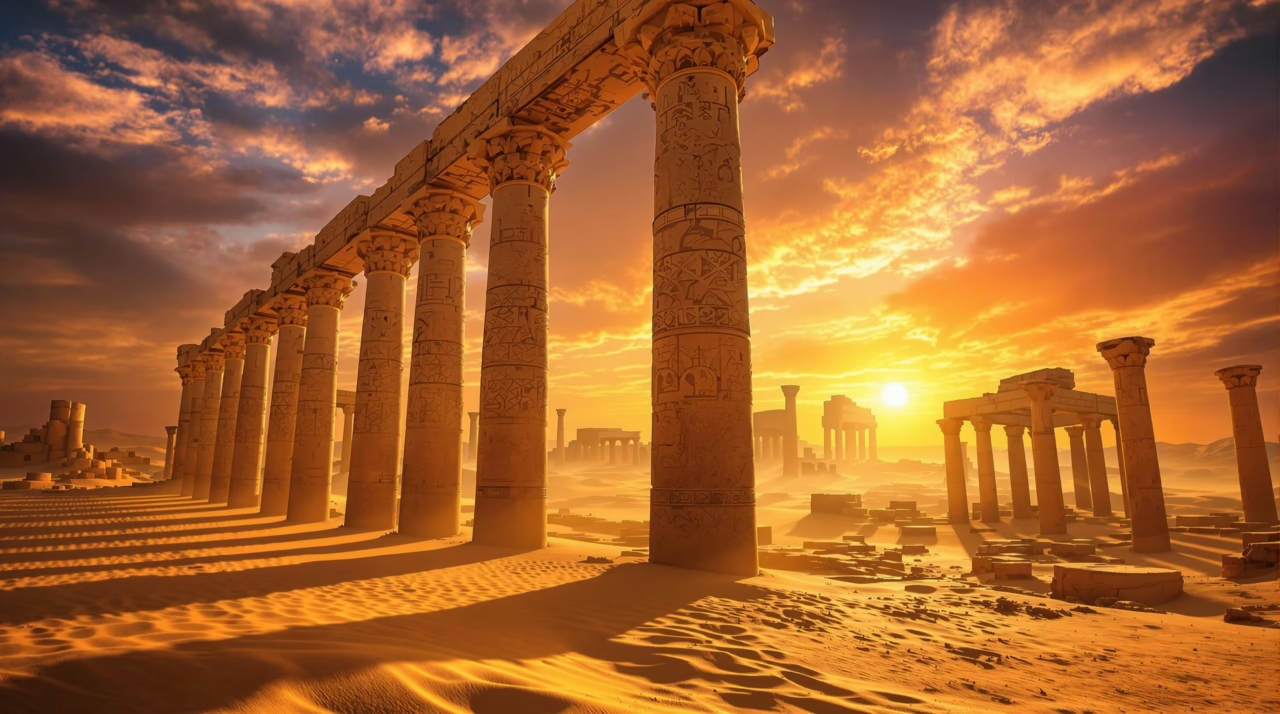
Where precisely lies the fabled city of Iram of the Pillars remains one of archaeology’s most tantalizing mysteries, shadowing the border between historical reality and mythological construct.
Referenced in the Quran as “Iram of the lofty pillars,” this legendary Arabian metropolis allegedly met divine destruction as punishment for its inhabitants’ pride and decadence.
Scholars debate whether Ubar, discovered in 1992 using NASA satellite imagery in Oman’s Rub’ al Khali desert, represents the historical foundation of the Iram myth.
This outpost on the frankincense trade route prospered for millennia before collapsing into a limestone cavern—a fate hauntingly resonant with Iram’s legendary demise.
Yet gaps persist between archaeological evidence and literary accounts.
Was Iram merely cautionary folklore, or did its towering columns once cast shadows across desert sands, monuments to humanity’s perpetual hubris?
Iram of the Pillars: Arabia’s Atlantis
Unravel the mysteries of Iram of the Pillars, a lost civilization shrouded in myth, and discover ... Read More
Pavlopetri
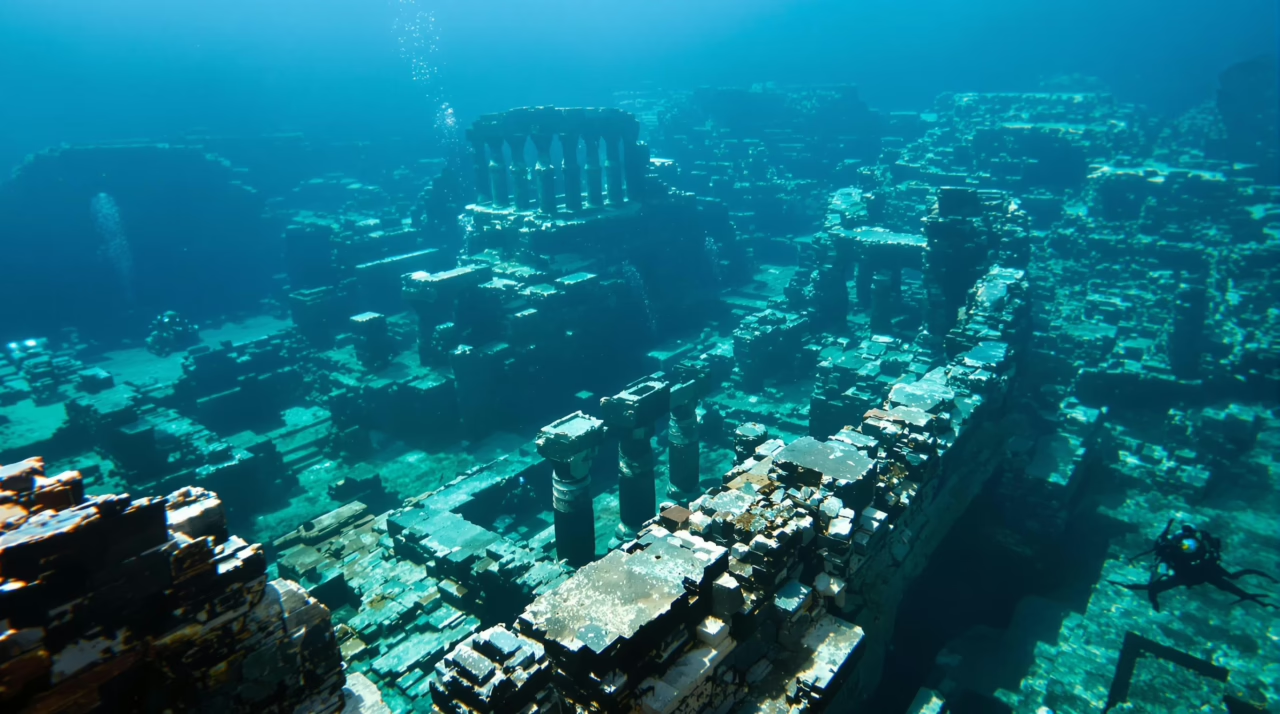
While desert legends leave us searching the arid expanses for ephemeral cities like Iram, beneath the azure waters of the Mediterranean lies a submerged settlement whose existence is unquestionably real.
Pavlopetri, located off the coast of southern Laconia in Greece, represents humanity’s oldest known submerged city, dating to approximately 3000 BCE.
This Mycenaean-era marvel offers archaeologists an unparalleled window into Bronze Age life, preserved by the very waters that claimed it.
Key features of Pavlopetri include:
- A sophisticated urban grid with streets, buildings, and courtyards
- Evidence of advanced drainage systems predating similar Roman engineering
- Preserved tombs containing artifacts revealing extensive Mediterranean trade networks
First discovered in 1967 and mapped in 1968, Pavlopetri continues to challenge our understanding of ancient technological capabilities, suggesting maritime civilizations far more advanced than previously imagined.
Pavlopetri: Oldest Underwater City
On the brink of discovery, Pavlopetri's submerged streets hold secrets of an ancient civilization, ... Read More
Hy-Brasil
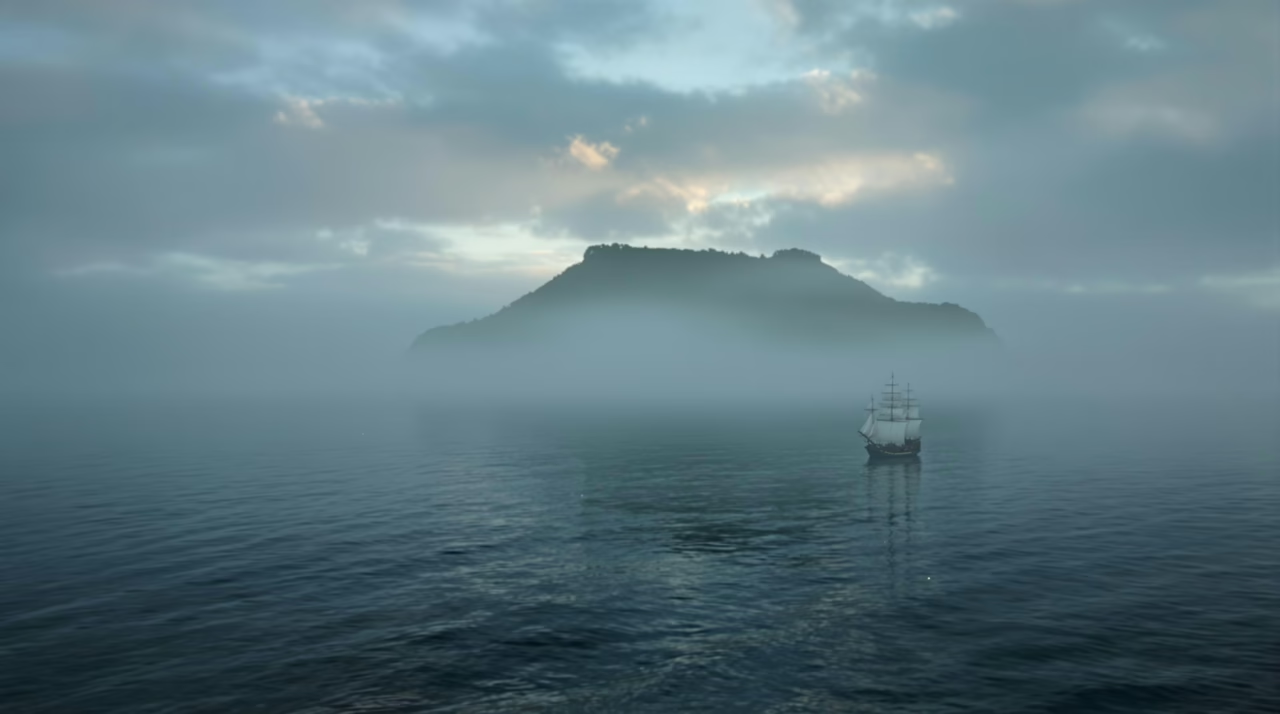
Sailors reported glimpsing Hy-Brasil through sea fog, describing an advanced civilization dwelling in gold-roofed cities, where scholars possessed ancient knowledge and inhabitants lived extraordinarily long lives.
This elusive isle, appearing only once every seven years according to legend, represents humanity’s enduring fascination with undiscovered lands beyond the horizon—territories simultaneously nowhere and everywhere.
The Legend of Hy-Brasil: Ireland’s Atlantis
Journey into the enigmatic legend of Hy-Brasil, where myth intertwines with reality—could ... Read More
Timgad
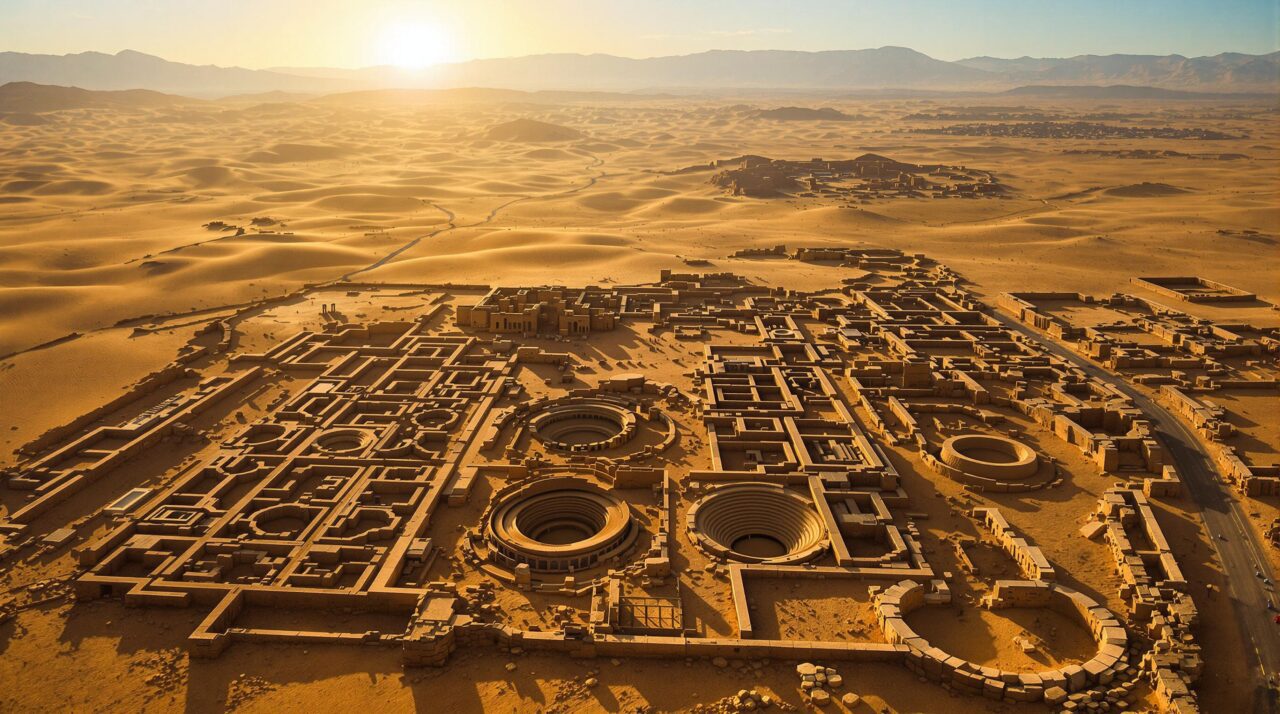
Unlike mythical islands that appear through sea mist, Timgad emerges from desert sands as tangible evidence of Rome’s imperial reach.
Founded by Emperor Trajan in 100 CE as Colonia Marciana Traiana Thamugadi, this North African outpost exemplified Roman urban planning with its perfect grid layout intersected by the decumanus and cardo maximus.
From desert oblivion, Timgad rises—a geometric testament to Roman ambition etched in stone and sand.
The remarkably preserved ruins in modern Algeria reveal a thriving provincial center that flourished until Vandal invasions in the 5th century.
Notable features include:
- The magnificent Arch of Trajan, standing sentinel at the city’s entrance
- An impressive 3,500-seat theater carved into hillside terrain
- The forum’s colonnade, showcasing classical architectural precision
Abandoned after the Arab conquest and gradually consumed by Saharan sands, Timgad remained hidden until French excavations in 1881 uncovered what archaeologists now call “the Pompeii of North Africa.”
Timgad: Rome’s African Ghost Town
Plunging into Timgad's ancient streets reveals whispers of a vibrant past, but what calamities led ... Read More
Helike
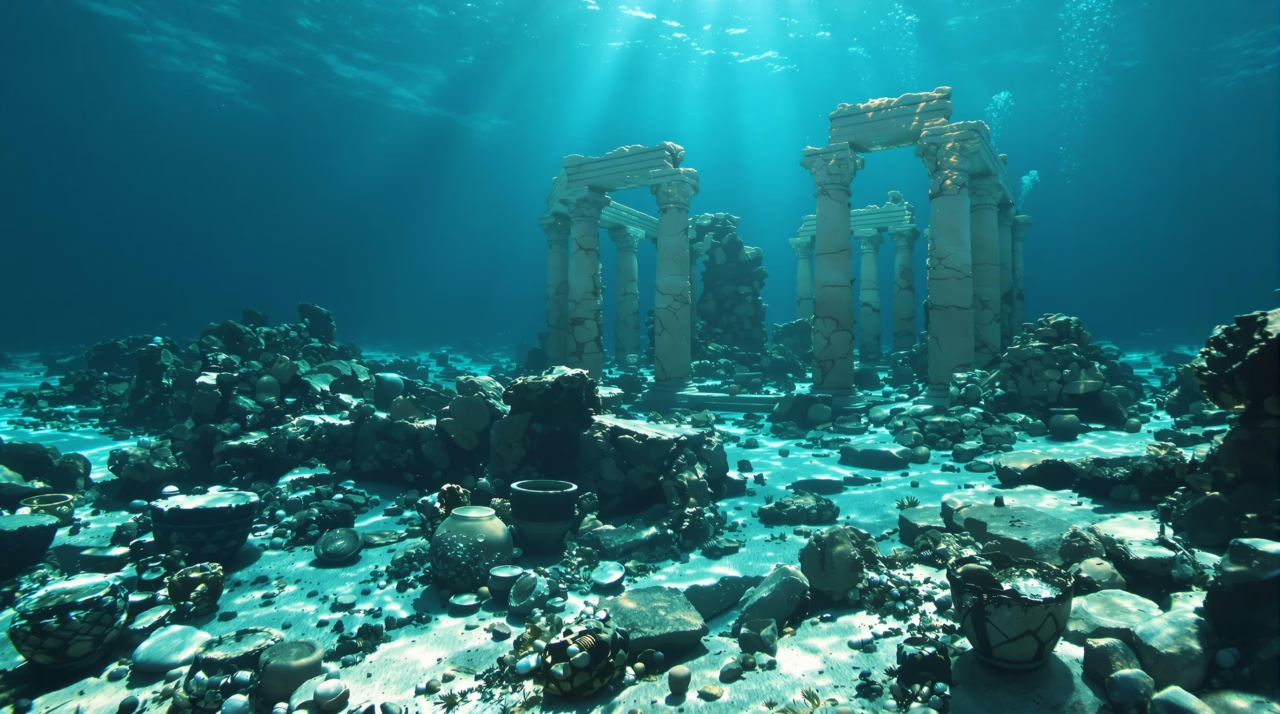
The cataclysmic destruction of Helike stands as perhaps ancient history‘s most dramatic cautionary tale of nature’s unpredictable fury.
In a single winter night in 373 BCE, this thriving Greek city on the Gulf of Corinth vanished beneath the waves when a massive earthquake triggered a devastating tsunami.
Pausanias and Strabo recorded how the disaster claimed all inhabitants, leaving only a submerged bronze statue of Poseidon marking its watery grave.
For centuries, Helike’s location remained a mystery until archaeologists discovered its ruins in 2001, buried beneath sedimentary deposits near Aigion.
The city’s instantaneous obliteration so haunted classical consciousness that it inspired Plato’s tale of Atlantis.
What civilizational hubris might have preceded such complete annihilation?
Helike reminds us that even mighty polities exist at the mercy of geological forces beyond mortal control.
Helike: Greece’s Lost City Beneath the Sea
Plunge into the mysteries of Helike, Greece's lost city, and discover what secrets lie beneath the ... Read More
Thinis
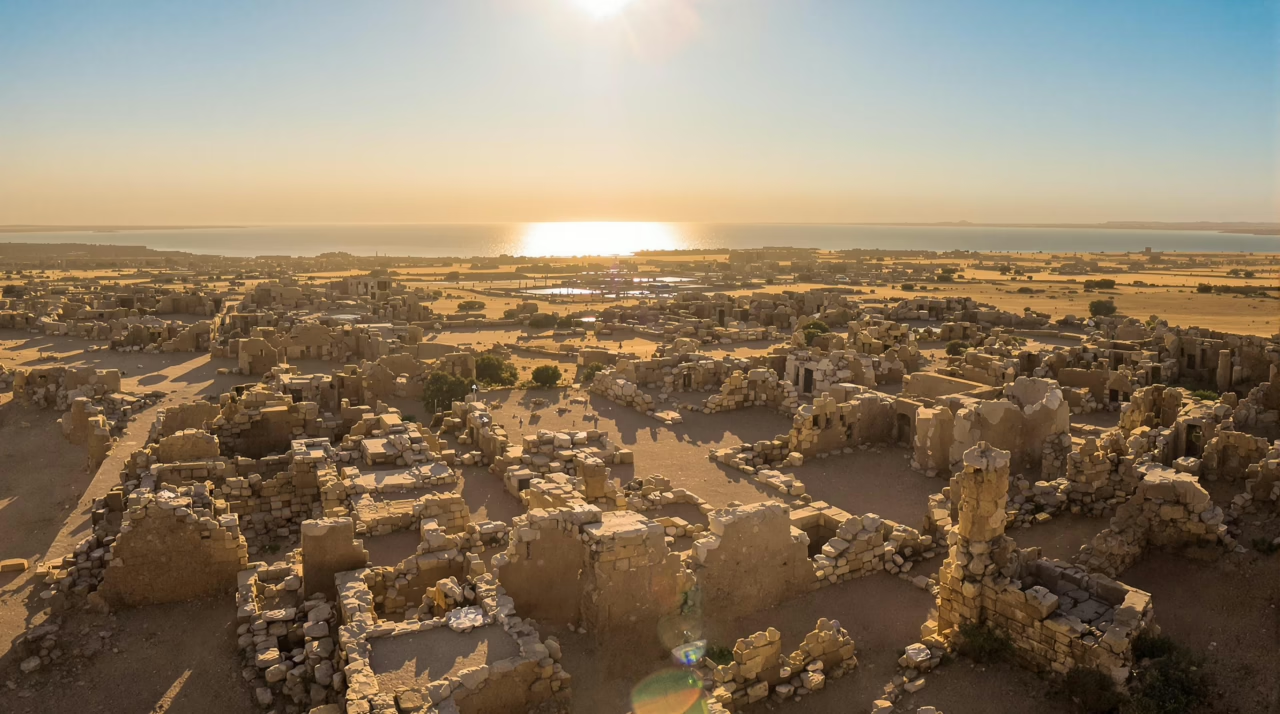
Ancient Egypt’s mythical progenitor city, Thinis, exists primarily as a tantalizing historical shadow, mentioned in fragmentary texts yet stubbornly eluding archaeological confirmation.
Located somewhere near Abydos in Upper Egypt, this enigmatic metropolis allegedly gave rise to Egypt’s first two dynasties, serving as the cradle of pharaonic civilization before Memphis ascended to prominence.
Historical accounts suggest three notable aspects of Thinis:
- Birthplace of Menes (Narmer), the legendary unifier of Upper and Lower Egypt
- Religious center housing early cults of Osiris and Anhur
- Administrative hub controlling trade routes between the Nile Valley and western oases
Despite numerous expeditions across the Abydos region, archaeologists have yet to definitively identify Thinis’s remains.
Perhaps its structures were repurposed, its stones cannibalized for later monuments, or—as some theorize—it lies buried beneath modern settlements, awaiting discovery.
Thinis: Egypt’s Forgotten First Capital
Plunge into the mysteries of Thinis, Egypt's forgotten first capital, and discover how its hidden ... Read More
Merv
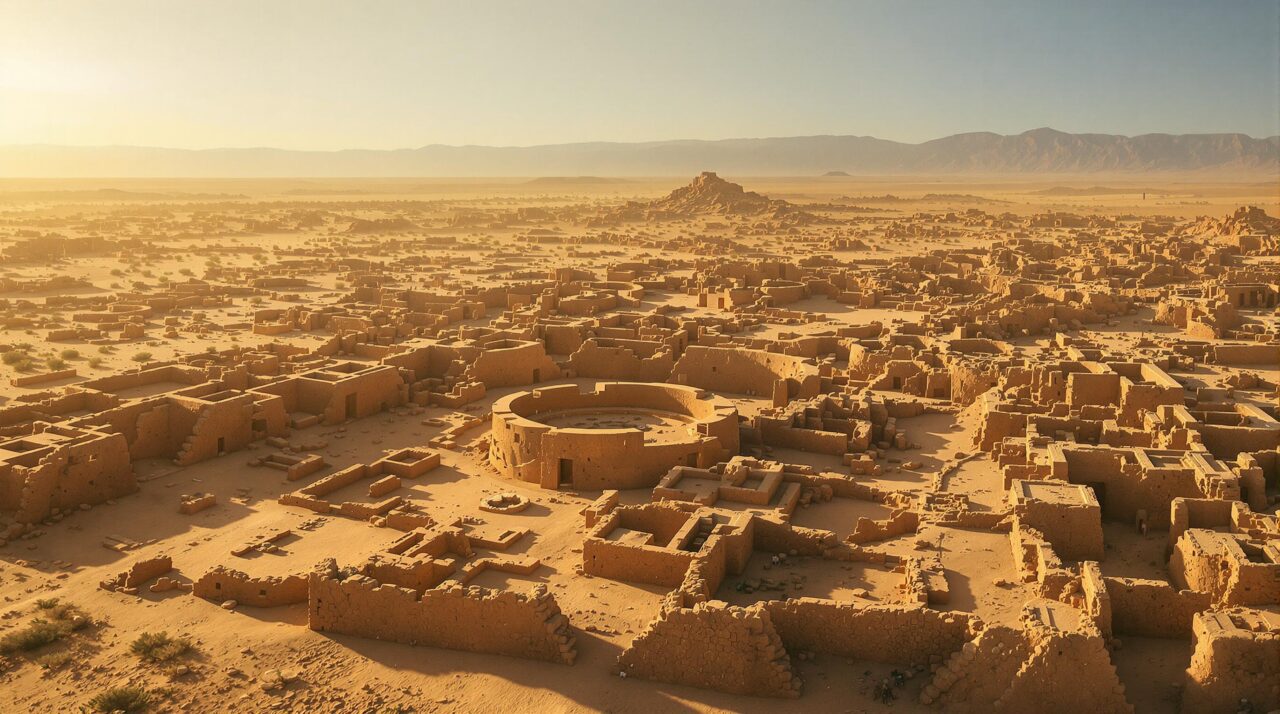
While Thinis remains elusive beneath Egyptian sands, Central Asia boasts a lost metropolis whose ruins speak volumes about its former grandeur.
Merv, located in modern-day Turkmenistan, once flourished as a pivotal Silk Road hub and briefly claimed the title of world’s largest city during the 12th century. Its sprawling archaeological complex, spanning over 1,000 hectares, encompasses five distinct urban centers developed across millennia.
The city met its catastrophic demise in 1221 when Mongol forces under Tolui Khan obliterated its infrastructure and massacred its inhabitants.
Archaeological estimates suggest a death toll exceeding 700,000 citizens.
Today, Merv’s weathered walls and melted ramparts stand as silent sentinels of impermanence, their sun-baked contours barely hinting at the intellectual vibrancy of a civilization that once housed magnificent libraries, observatories, and public baths.
Merv: Central Asia’s Forgotten Metropolis
The tales of Merv, a once-thriving Silk Road jewel, hint at hidden wonders waiting to be unveiled ... Read More
Paititi

Deep within the verdant recesses of the Amazonian rainforest, Paititi continues to elude explorers and archaeologists alike, persisting as perhaps South America’s most tantalizing lost city legend.
Incan oral traditions describe it as a refuge of immense wealth, established during the Spanish conquest when Emperor Manco Inca retreated from colonial forces.
The city’s mythos has intensified through centuries of speculation, drawing countless expeditions into Peru and Bolivia’s unforgiving jungle terrain.
Key aspects of the Paititi legend include:
- Its rumored vast repositories of gold and silver artifacts
- Geographic descriptions placing it east of the Andes in unmapped territories
- Its connection to El Dorado legends that captivated European imaginations
Modern satellite technology and indigenous knowledge have narrowed search parameters, yet Paititi remains tantalizingly beyond reach, challenging our understanding of pre-Columbian civilization‘s true extent.
Paititi: The Lost City of the Inca
The legendary Paititi beckons with whispers of ancient treasures and secrets; what mysteries of the ... Read More
Vineta
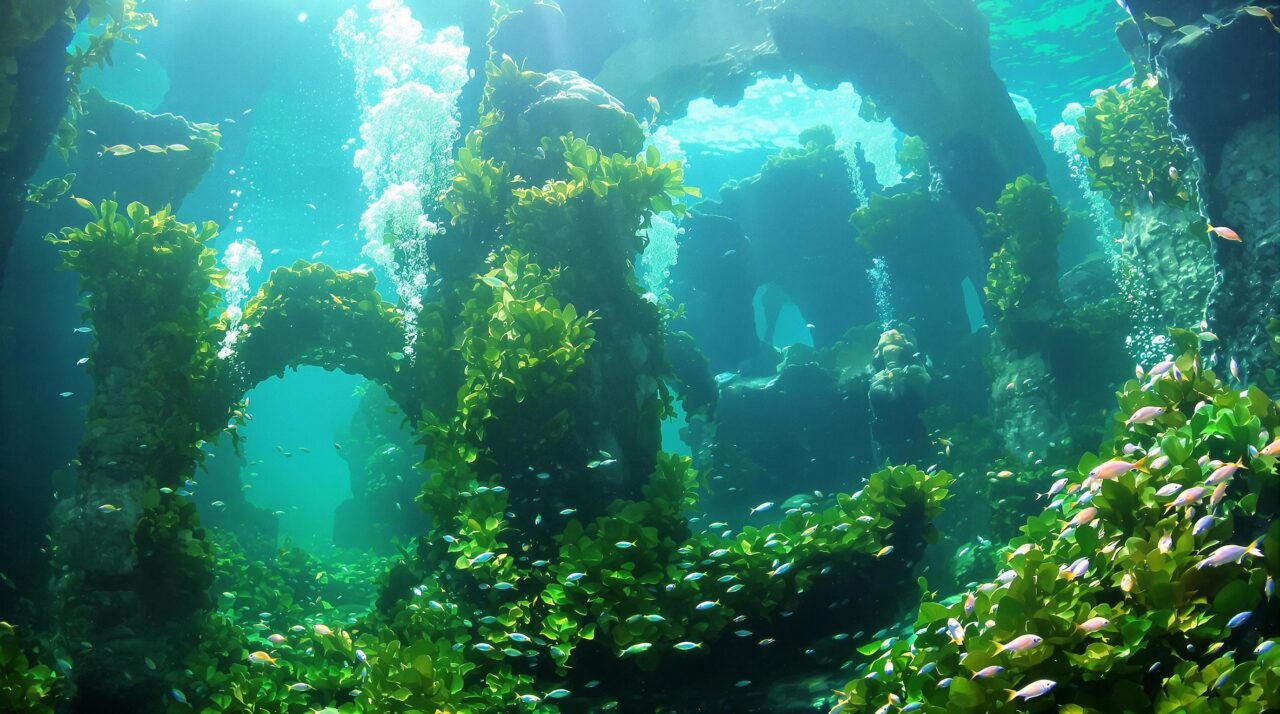
Legends of the Baltic Sea contain few mysteries as compelling as Vineta, a wealthy medieval trading port purportedly submerged beneath the churning waves along Germany’s northern coastline.
Chronicles from Adam of Bremen and Saxo Grammaticus describe a prosperous Slavic settlement that vanished in the 12th century, swallowed by furious waters as divine retribution for its inhabitants’ hubris and decadence.
Archaeological evidence remains frustratingly scant, yet generations of Baltic fishermen have reported glimpsing submerged spires during moments of exceptional clarity beneath the sea.
Multiple locations, including Wollin Island and Rügen, compete for recognition as Vineta’s true resting place.
The sunken city has transcended mere historical curiosity to become a powerful cultural metaphor for transience and accountability, inspiring countless works of German literature and art that ponder what truly disappears when a civilization slips beneath the waves.
Vineta: The Sunken City of the Baltic Sea
Beneath the waves of the Baltic Sea lies Vineta, a sunken city shrouded in mystery, waiting for ... Read More
The Hidden City of the Monkey God
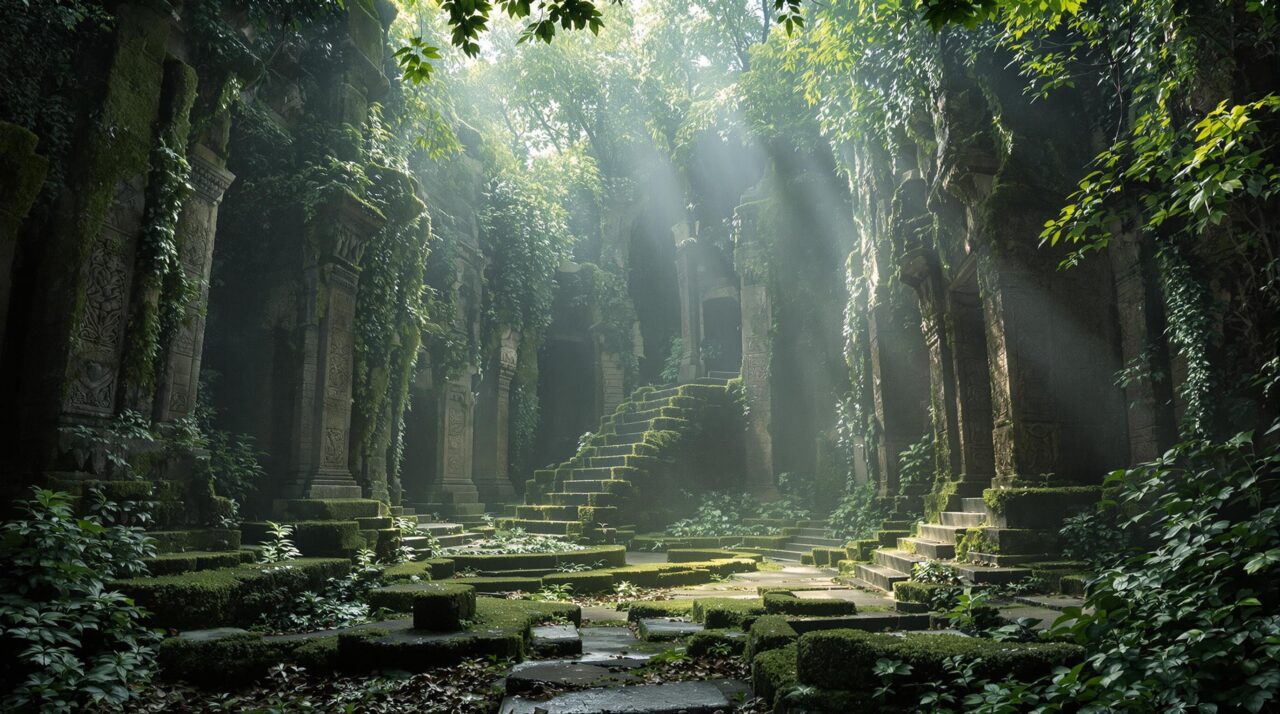
Throughout the lush rainforests of Central America, especially near the borders where Guatemala, Belize, and Mexico converge, stories persist of an elusive settlement known as “The Hidden City of the Monkey God.”
This enigmatic metropolis, purportedly containing massive simian effigies crafted from pure gold, has tantalized explorers and archaeologists for centuries despite remaining frustratingly beyond reach.
Historical accounts from conquistadors and indigenous narratives reference this mythical location, describing:
- Temples adorned with golden monkey statues standing sentinel over vast treasuries
- A sophisticated hydraulic system that allegedly created mechanical monkey guardians
- Astronomical observatories aligned with celestial positions of particular significance to simian deities
Despite numerous expeditions, including renowned archaeologist Sylvanus Morley’s 1921 attempt, the city remains undiscovered—perhaps protected by the very jungle that conceals it, or possibly nothing more than an elaborate cultural metaphor for wisdom‘s elusive nature.
The Hidden City of the Monkey God
Secrets of the Hidden City of the Monkey God beckon explorers; what ancient mysteries lie beneath ... Read More
Z City
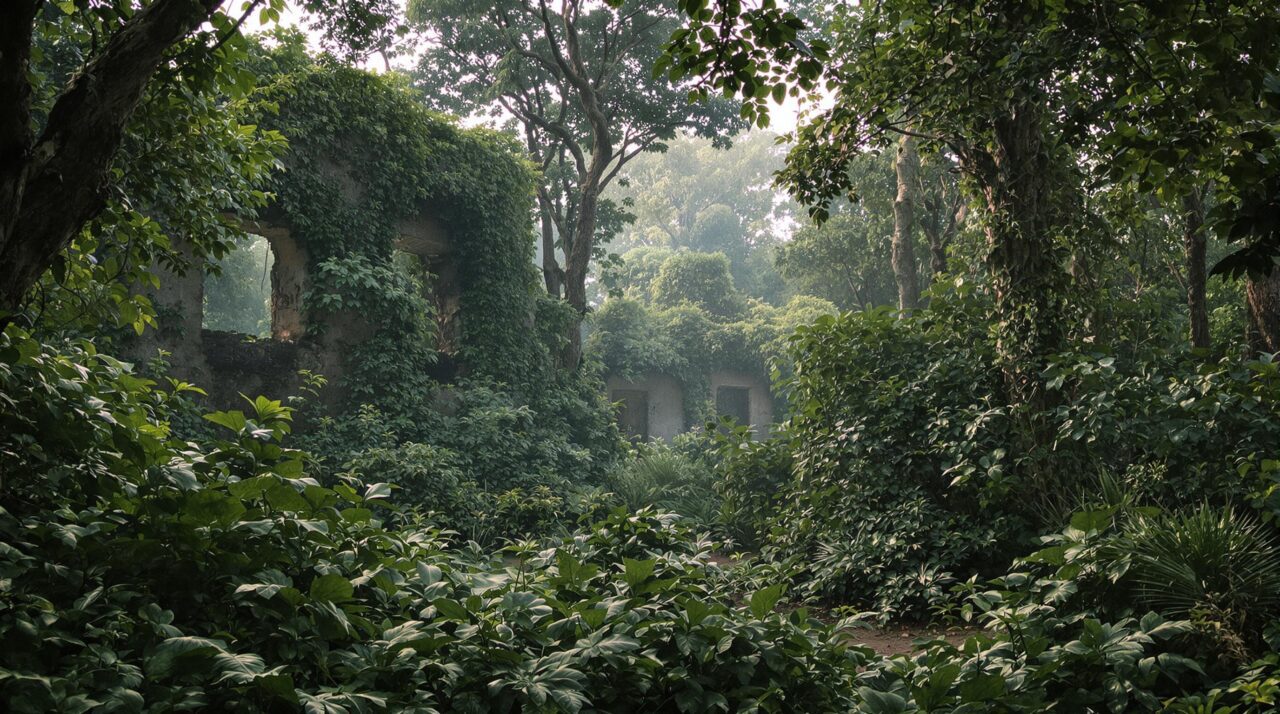
Among the most enigmatic lost settlements in archaeological records, Z City represents a profound historical conundrum that continues to baffle experts and enthusiasts alike.
First referenced in Colonel Percy Fawcett‘s controversial 1925 expedition journals, this purported metropolis nestled deep within the Amazon basin has eluded definitive discovery for nearly a century.
Satellite imagery from 2018 revealed geometric patterns beneath dense rainforest canopy, suggesting organized urban planning inconsistent with natural formations.
Artifacts recovered from nearby sites—ceramic fragments adorned with unfamiliar glyphs, alloys of unknown composition—hint at an advanced civilization that flourished between 800-1200 CE.
What cataclysm or gradual decline led to Z City’s abandonment? The tantalizing possibility that an independent technological society developed in isolation continues to drive exploration, despite the jungle’s relentless reclamation of humanity’s forgotten achievements.
Z City: The Lost City in the Amazon
Percy Fawcett's mysterious search for Z City in the Amazon raises questions about the untold ... Read More
Wrapping Up
These lost cities—enigmas shrouded in time’s veil—continue to captivate humanity’s imagination and scholarly pursuit.
Remarkably, over 120 significant “lost” cities have been rediscovered in the past century alone, yet thousands more likely remain concealed beneath earth, jungle, and sea.
As technology advances, these silent witnesses to vanished civilizations await discovery, holding invaluable lessons about human ingenuity, societal collapse, and our eternal quest to build monuments against impermanence.
Frequently Asked Questions (FAQs)
What is the most famous Lost City?
The most famous lost city is undoubtedly Machu Picchu, located in the Peruvian Andes. It was rediscovered in 1911 by Hiram Bingham, an American explorer, although local people had known about it for centuries. T
his ancient Inca city is renowned for its stunning architecture and breathtaking natural surroundings.
It is believed to have been a summer retreat for the Inca elite and was abandoned before the arrival of the Spanish conquistadors. Today, Machu Picchu is one of the most iconic tourist destinations in the world, attracting millions of visitors each year.
Do hidden cities exist?
Yes, hidden cities do exist, though they might not be as mysterious as those from legends. Historically, many cities were built underground or in remote locations for defensive or strategic purposes.
For example, Derinkuyu in Turkey is an ancient underground city that was used as a shelter during times of war. It was only discovered in the 20th century and is now a popular tourist site.
Additionally, during World War II, secret cities like Oak Ridge in the United States were built to keep important projects hidden from the public. These cities were not necessarily “lost” but were certainly hidden from public view.
What is the Lost City myth?
The Lost City myth often refers to legendary places that are said to exist but have not been found. These myths are often rooted in historical or mythological stories.
For instance, El Dorado and Atlantis are famous examples of lost cities that have captivated the imagination of people for centuries.
These stories often involve tales of hidden treasures or advanced civilizations that have been lost to time. While some lost cities like Machu Picchu have been rediscovered, others remain the subject of legend and speculation.
Which is known as Lost City?
Several places are known as “Lost Cities,” but one notable example is the Lost City of the Monkey God, also referred to as the White City, located in the Mosquitia region of Honduras and Nicaragua.
This site has been the subject of numerous expeditions and legends, with some believing it was abandoned due to European diseases and slavery.
Recent discoveries have uncovered artifacts and structures, though the site remains somewhat mysterious. Another example is Paititi, a legendary city in the Amazon that has been the focus of many expeditions but remains undiscovered.
